
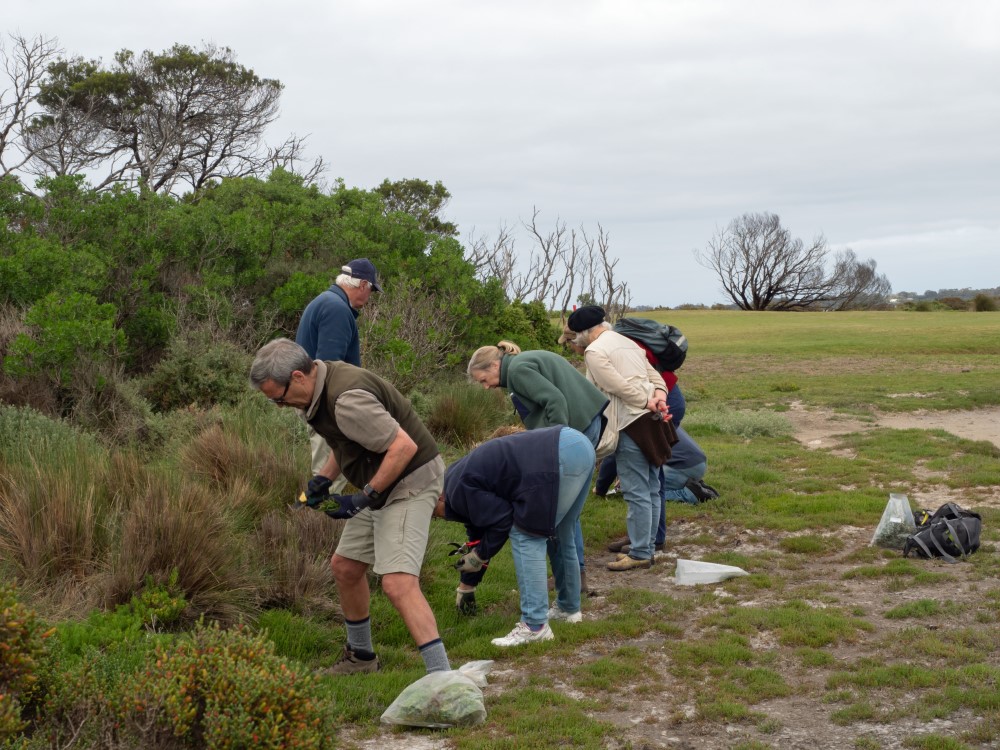
Collecting seeds and cuttings
The production of nursery plants begins with the collection of seeds and cuttings. Most are collected from as many plants as we can find in the wild. Others may come from nursery plants that have been planted in the local area, perhaps in someone’s garden.
We also have a collection of stock plants at the nursery that can be used for cuttings. The best time to collect cuttings, which is generally a mix of softwood and semi-hardwood cuttings, is after rain or in the mornings.

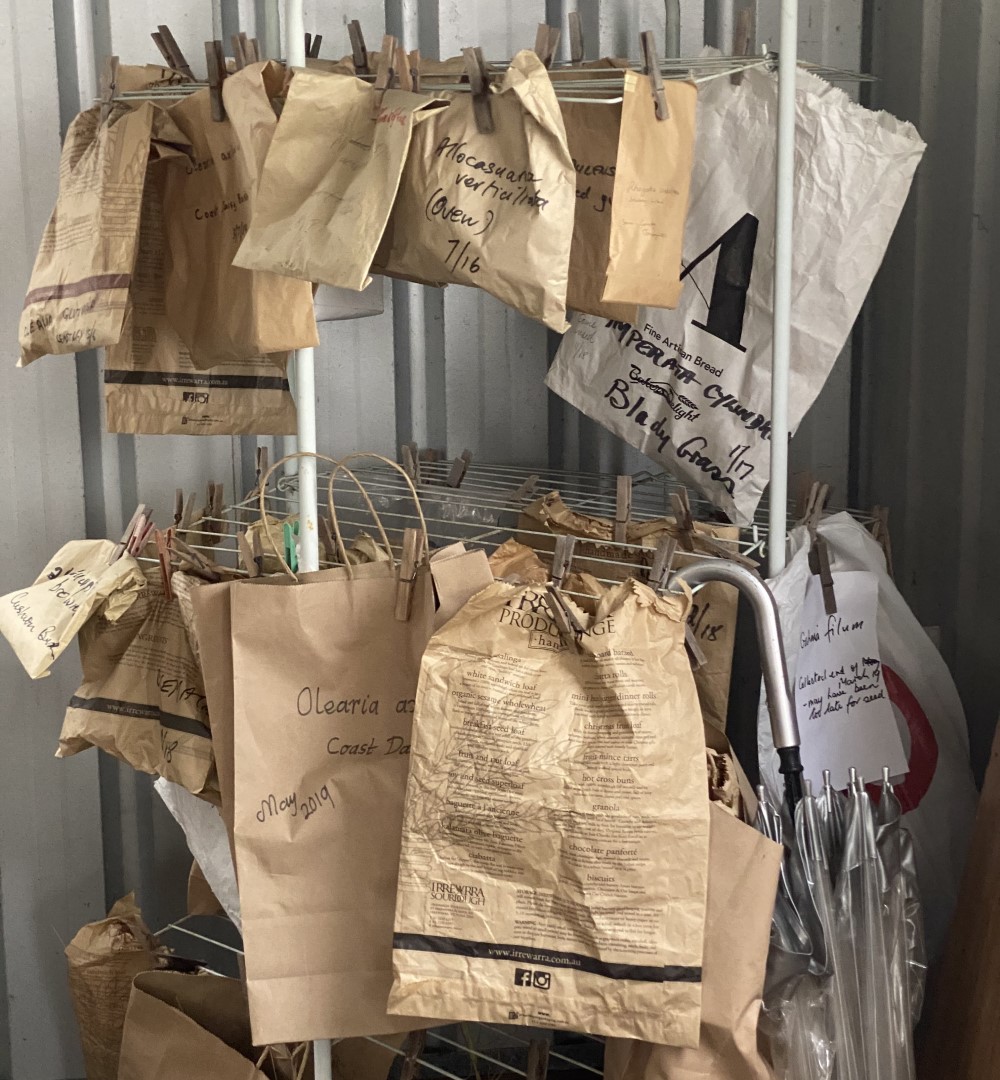
Preparing dry seeds
When the brown woody seeds arrive at the nursery, they are popped inside a paper bag and hung up to dry. Once dry they are cleaned and separated from leaves, chaff and sticks.
The dry seeds are placed in small sealable bags labelled with the plant name and its source. The bags are then stored in alphabetical order inside our fridge and become part of our seed bank.

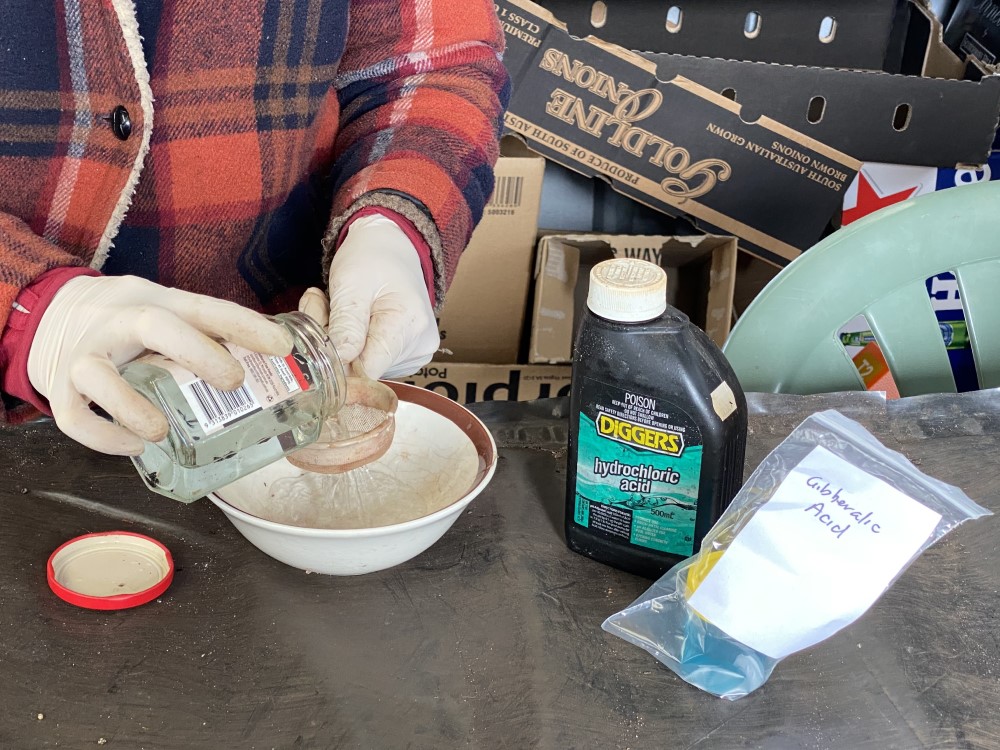
Preparing wet seeds
Before we can use wet seeds, we have to remove them from the fruit of the plant. We begin by soaking the fruits for a day or two, which allows them to ferment a little. The flesh is then removed and the seeds flushed with water. Once the seeds are dried, with some moisture retained, they can be stored in our fridge.
However, for the majority of the wet seeds it is good to sow them straight away because their shelf-life in storage is limited. Often before sowing we have to soak them again in an acid to break down the chemical dormancy that can prevent germination.

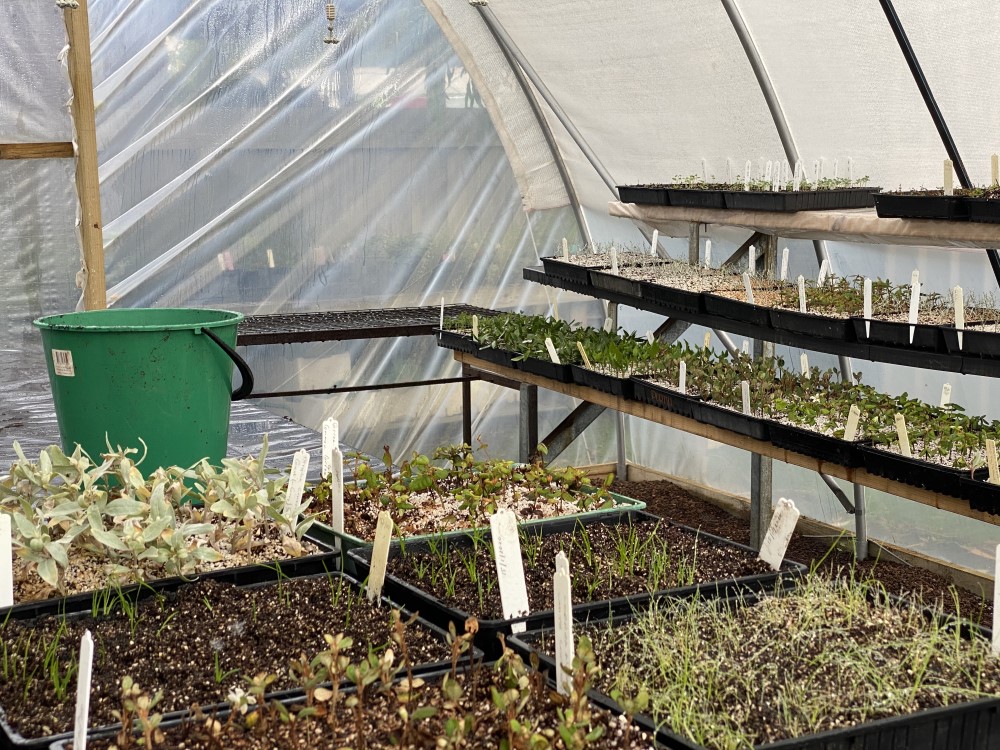
Planting seeds
We have a special propagation mix for our seeds. It includes coir, vermiculite and perlite to help with drainage and water retention. The mix is spread on a tray and the seeds buried. The burial depth is usually 2.5 times the seed’s broadest width. Once the seeds are buried, they are covered with more propagation mix and watered until the water drips from the bottom.
The trays are labelled with the plant’s name and where the seed has come from before being stored in the hothouse. Knowing the source location of the seed helps us with future collecting.

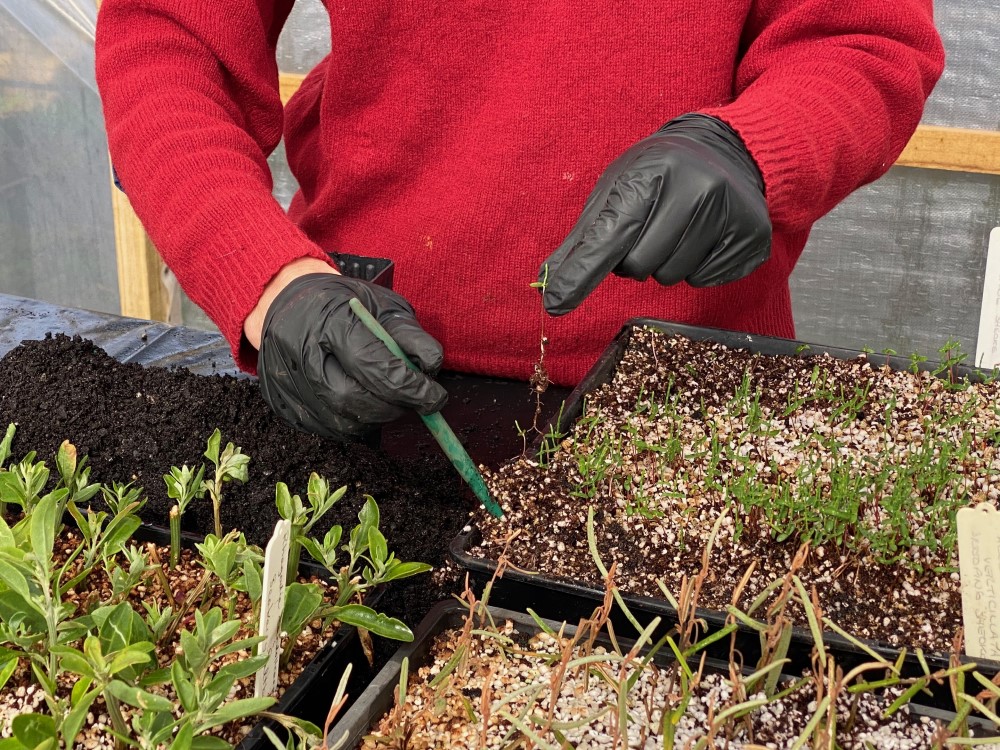
Pricking out the seedlings
Once the seeds have germinated, we remove each from the tray. This is called ‘pricking’. Signs of germination are branched root systems and leaves appearing above the surface of the mix.
Germination time varies across the plant species that we grow at the nursery. The pricked seedlings are planted in a tube and moved out of the hothouse into the open air of the nursery.

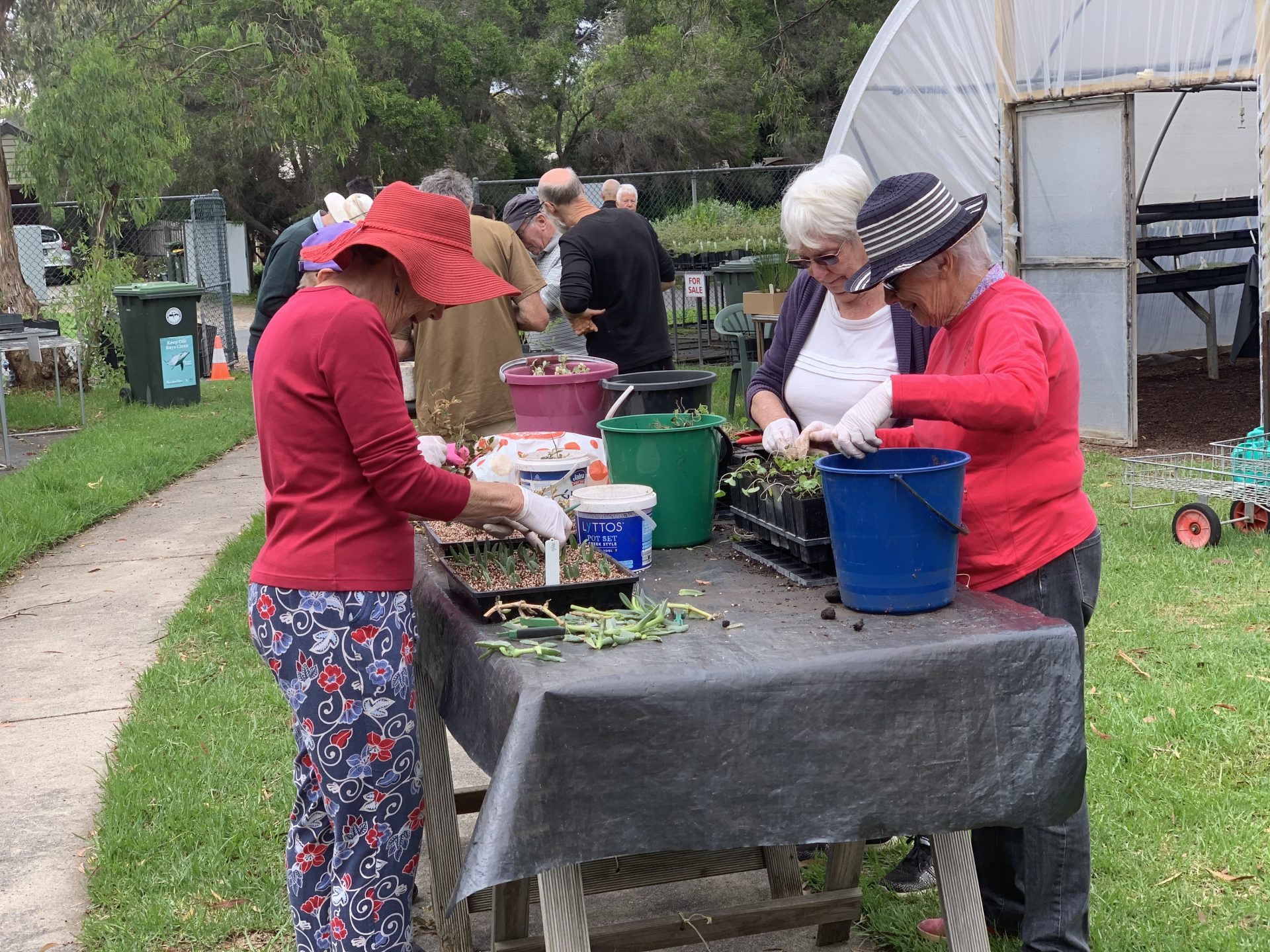
Growing plants from cuttings
When growing plants from cuttings, we use a propagation mix of coir and perlite in one tray per plant species. Before the cuttings go into the mix, they are dipped in either a purple hormone, red hormone or IBA powder.
The cuttings are then watered very well to ensure the water soaks through and out the bottom of the tray. Once inside the hothouse, softwood cuttings can take from one week in summer to four weeks in winter before being ready for potting. Semi-hardwood cuttings take longer.

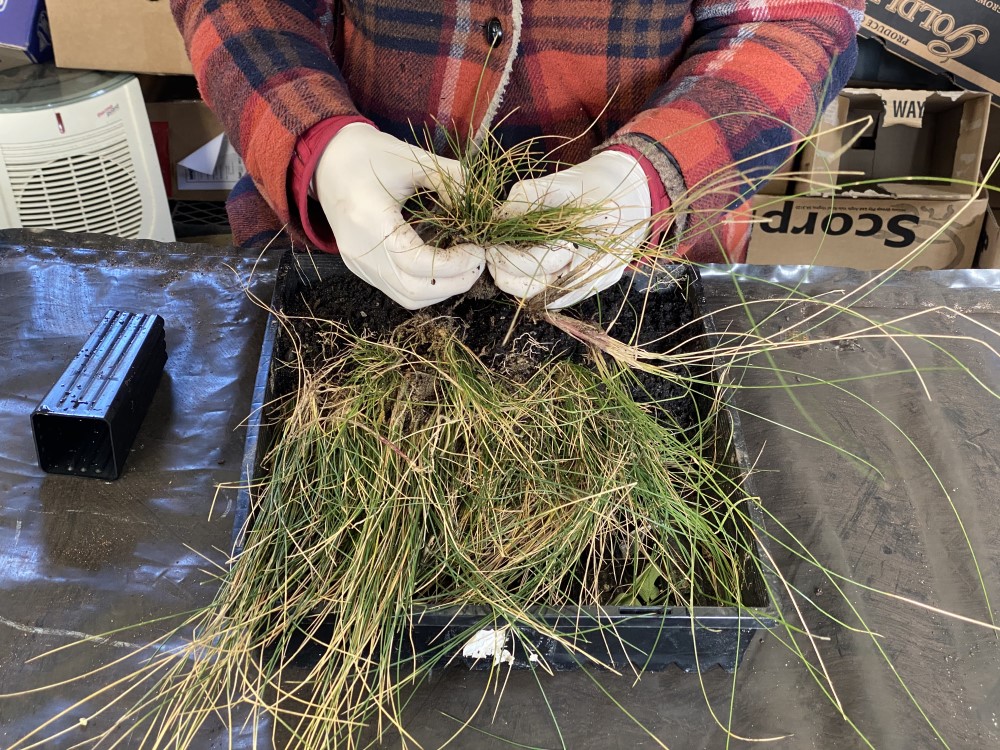
Dividing plants
The third way we grow nursery plants is by dividing them. This is done with some plants that have a clumping or spreading nature. We can divide them when they have outgrown their tube or we can dig them out of the ground. One plant may be divided into three or more plants and then re-potted in separate tubes.
Divided plants benefit from fresh soil and more space to grow and they respond very quickly. Dianella sp., for example, do very well after being divided. The dividing process is more labour-intensive than our other propagation methods but the plants are very soon ready for sale.

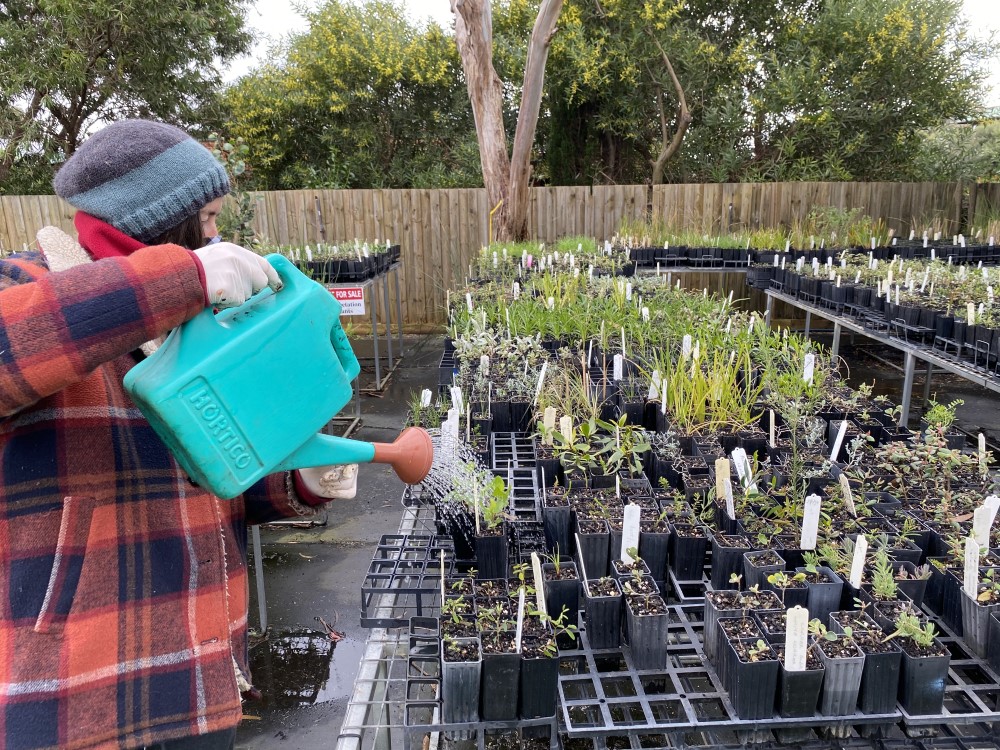
Caring for plants
Constant monitoring of hothouse conditions is critical in caring for the growing plants. Is it too wet or too dry? Has any fungus appeared on the trays? What about fungal gnats and aphids? How is seedling hygiene and health? When the young plants come out of the hothouse it is important that they are placed in a protected position.
This avoids their drying out by strong winds. As they start growing they will need to be moved again. Repositioning and monitoring plants in the nursery is an ongoing task. The other major task is to keep the plants well-watered.
